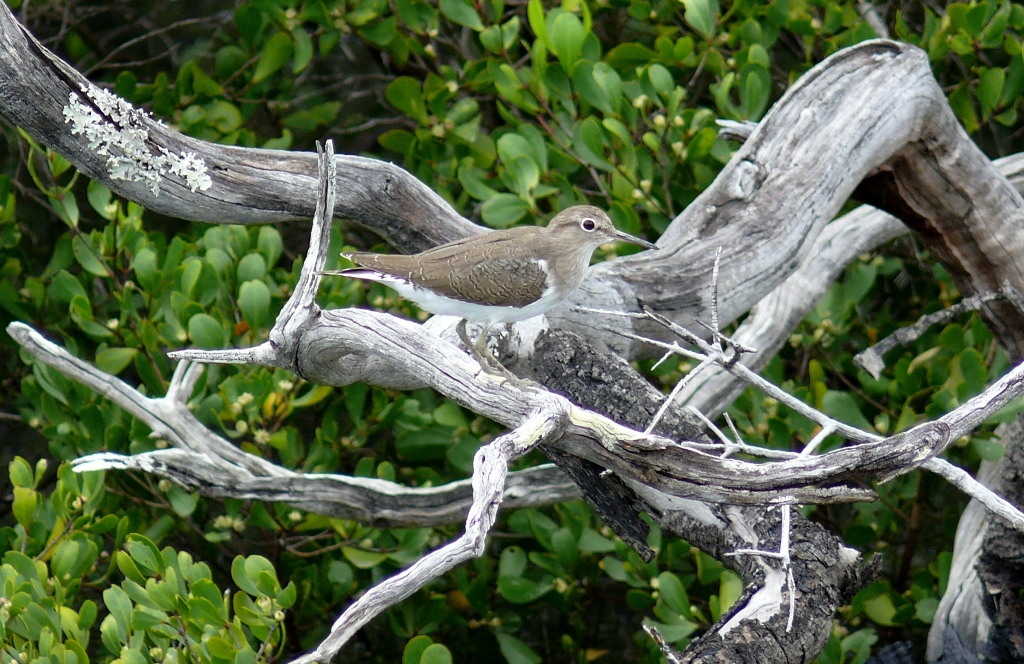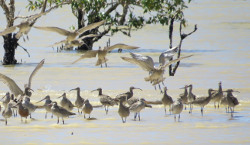|
|
ShorebirdsShorebirds, also referred to as waders, are a grouping comprised of a variety of birds from the order Charadriiformes[1] that commonly wade in water in search of food. Some species of shorebirds are resident and stay in Australia all year round, but many others have distinctive lifestyles that typically involve trans-equatorial migrations. Migratory shorebirds generally breed in the northern hemisphere during the northern summer and travel to Australia and other southern hemisphere locales during the austral summer. Queensland shorebird species - Bird wetland indicator species and profiles Quick facts

Shorebirds in Queensland are protected under various State and Commonwealth law and a number of species are listed as threatened. There are also a range of international conventions agreements and partnerships that relate to the protection and management of shorebirds and their habitats. Of the over 50 shorebird species that regularly occur in Australia, around a third are resident species, meaning they breed in Australia and do not migrate outside of Australia. One other species, the Australian pratincole, breeds on semi-arid plains of central and northern Australia and migrates to south east Borneo, Java and New Guinea. Some resident shorebirds such as the Australian pied oystercatcher, sooty oystercatcher, beach stone-curlew, red-capped plover Australia's migratory shorebird species form part of the East Asian-Australasian Flyway. This flyway route extends from breeding grounds in the Alaskan and East Siberian tundras and forests, and the steppes and deserts of Mongolia and extreme Northern China, to non-breeding areas in South-east Asia, Australasia and New Zealand. Migratory shorebirds spend the majority of their time in their non-breeding environments. Distributions for many species along the Queensland coast can be viewed here.
While migratory shorebirds travel huge distances each year, resident Australian species may move long distances between suitable wetland habitat depending upon changes in local conditions and time of year. Extreme and unpredictable, or regular changes between wet and dry conditions are usually the cause of movements of many resident shorebirds. Migratory species that use freshwater wetlands are similarly at the behest of changes of varying conditions in Australian wetlands. Of the regularly occurring shorebird species in Australia, several occur in quite low numbers and are seldom seen in Queensland. They include the red-necked phalarope, little ringed plover, long-toed stint, common redshank and pin-tailed and swinhoe’s snipes. Furthermore, two of the resident species, banded stilt and hooded plover, have distributions that centre on southern inland regions or southern coastal regions respectively, and are not typical of the Queensland shorebird community. Additional information
Pages under this sectionReferences
Last updated: 2 February 2021 This page should be cited as: Department of Environment, Science and Innovation, Queensland (2021) Shorebirds, WetlandInfo website, accessed 8 May 2025. Available at: https://wetlandinfo.des.qld.gov.au/wetlands/ecology/components/biota/fauna/fauna-taxon/birds/shore-bird/ |

 — Department of the Environment, Tourism, Science and Innovation
— Department of the Environment, Tourism, Science and Innovation




